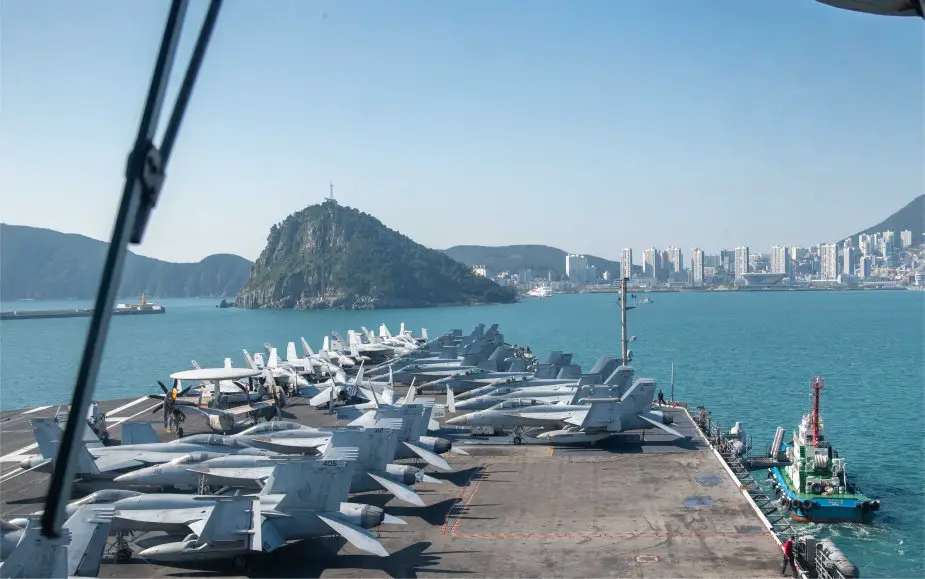According to information published by the US DoD on October 31, 2023, the Navy's aircraft carrier, USS Ronald Reagan (CVN 76), arrived in Manila, Republic of the Philippines for a port visit.
Follow Navy Recognition on Google News at this link
 US Navy's aircraft carrier Ronald Reagan. (Picture source: US Navy)
US Navy's aircraft carrier Ronald Reagan. (Picture source: US Navy)
The United States Navy has strategically positioned three Carrier Strike Groups (CSGs) across different global locations. These deployments, spanning from the Mediterranean to the Indo-Pacific, reflect the technical capabilities of the U.S. Navy and have significant geopolitical implications.
Eastern Mediterranean: USS Gerald R. Ford and USS Dwight D. Eisenhower
In the eastern Mediterranean, the USS Gerald R. Ford and the USS Dwight D. Eisenhower Carrier Strike Groups have been deployed. This action is a response to the heightened tensions in the region, particularly following the attack on Israel. The presence of these carrier strike groups is indicative of the U.S.'s interest in regional stability.
The USS Gerald R. Ford leads a strike group that includes Ticonderoga-class and Arleigh-Burke-class vessels. The USS Dwight D. Eisenhower Strike Group comprises similar classes of ships and Carrier Air Wing 3.
Philippines: USS Ronald Reagan
In the Indo-Pacific, the USS Ronald Reagan Carrier Strike Group visited Manila, Philippines. This group includes Ticonderoga-class cruisers and elements of Carrier Air Wing 5 and Destroyer Squadron 15. This visit highlights the U.S. Navy's operations in the Indo-Pacific region.
Implications
In the Mediterranean, the presence of two carrier groups serves as a potential deterrent and signals the U.S.'s interest in the security of the region.
In the Indo-Pacific, the USS Ronald Reagan's visit to the Philippines is reflective of the U.S. Navy's role in a region marked by rising tensions, particularly in areas like the South China Sea. It underscores the U.S.'s stance on freedom of navigation and regional alliances.



